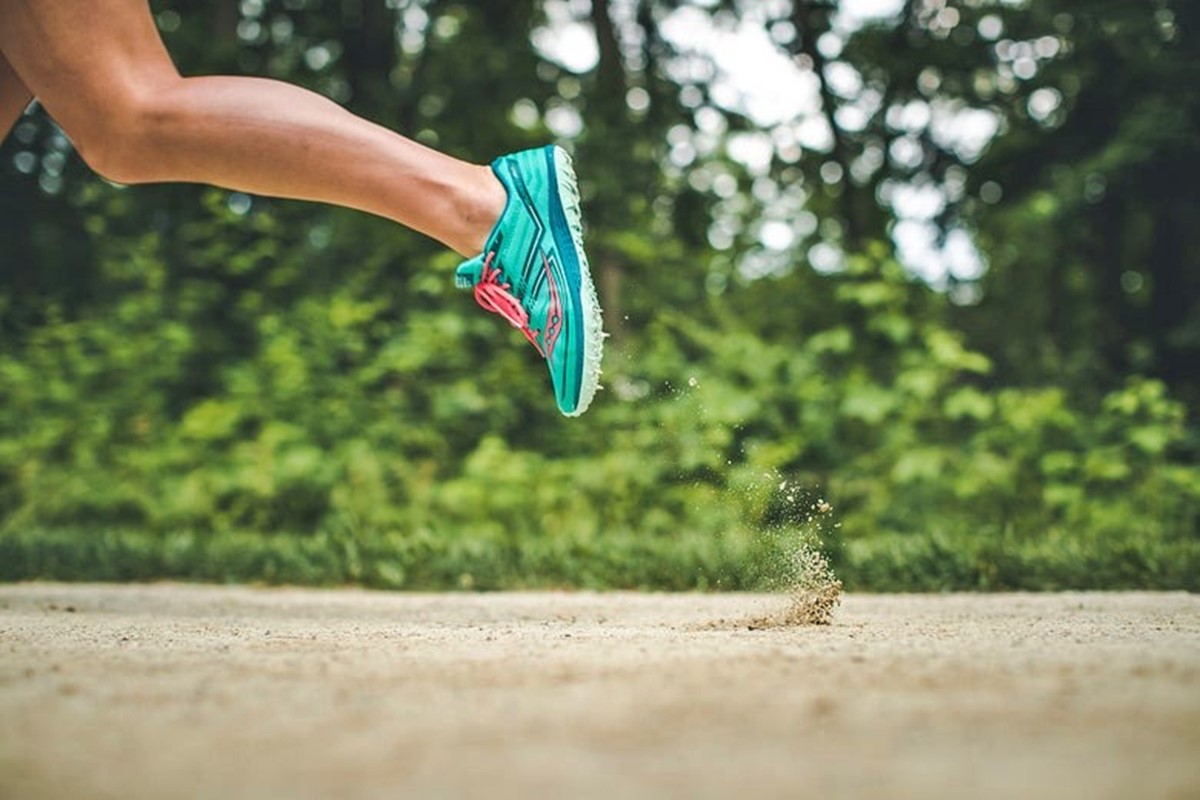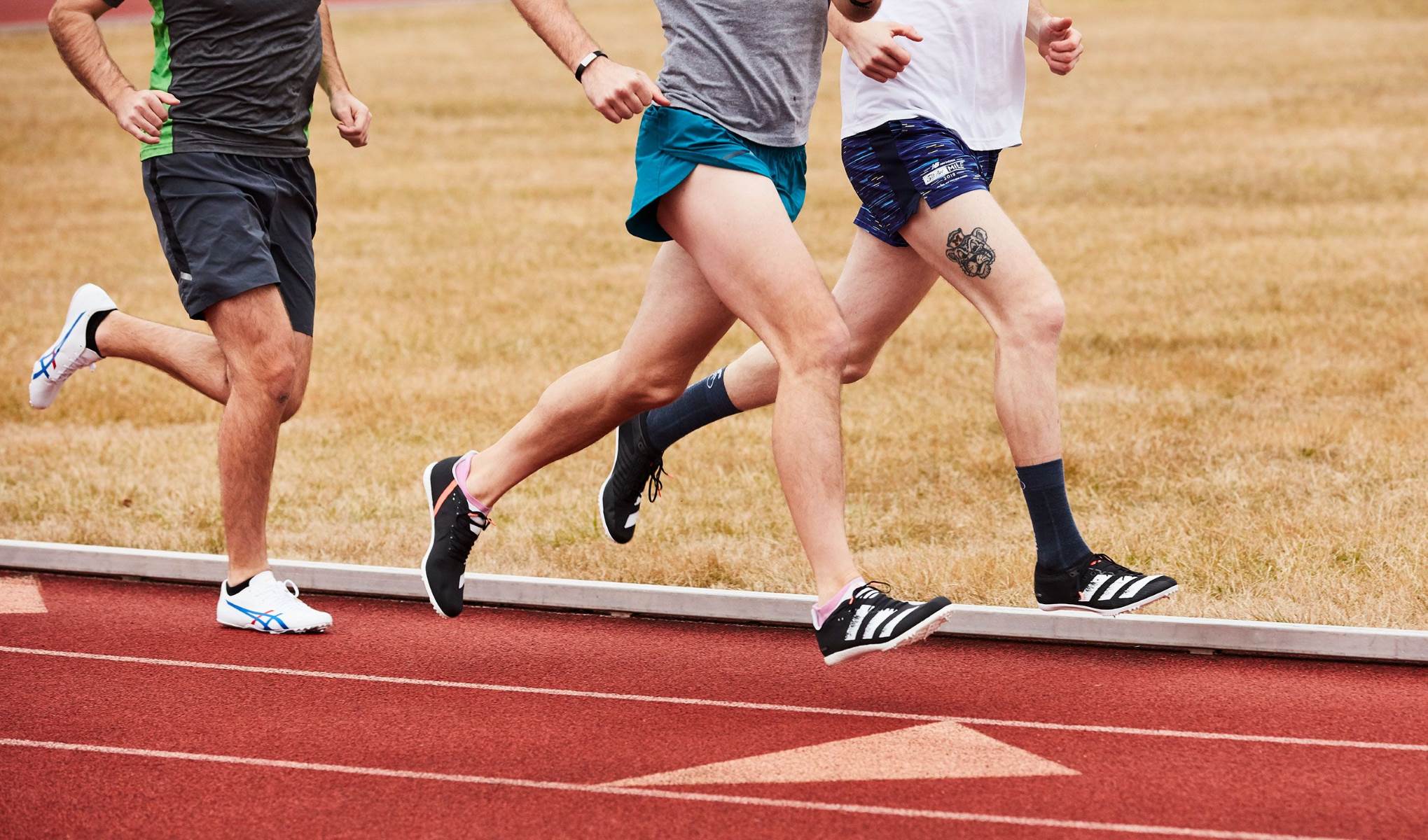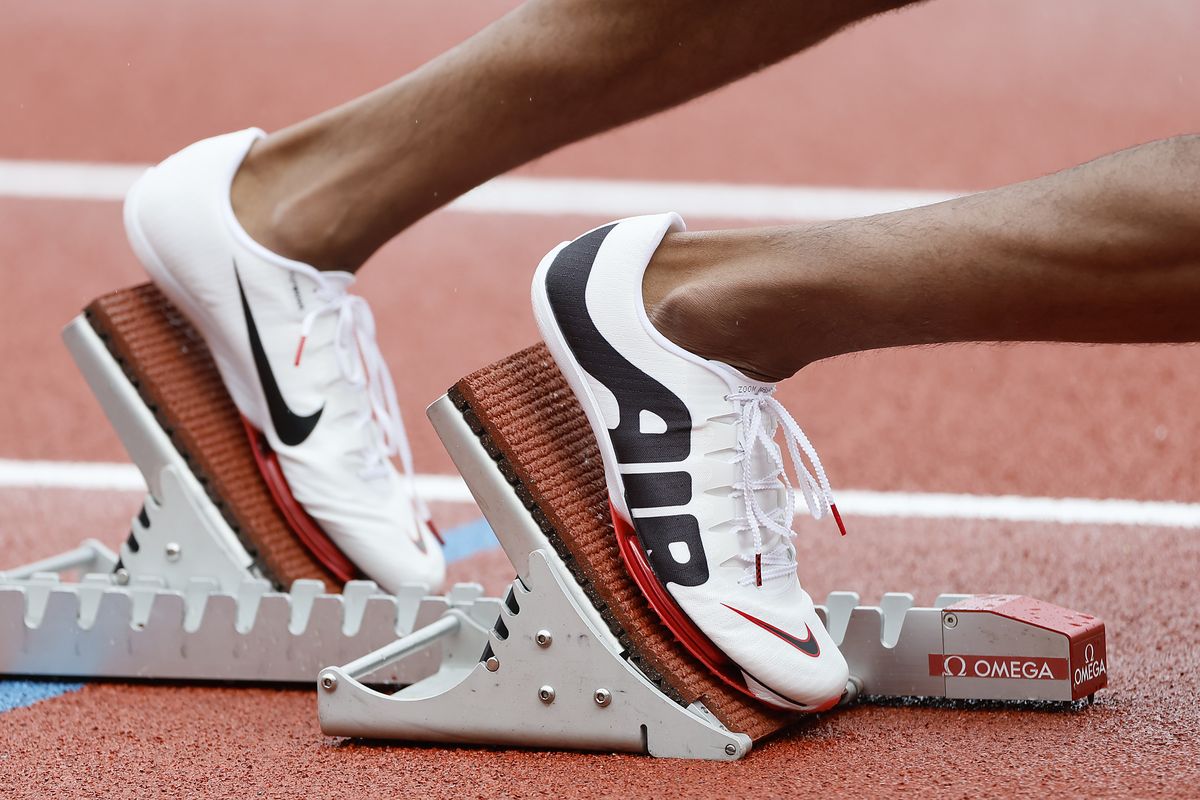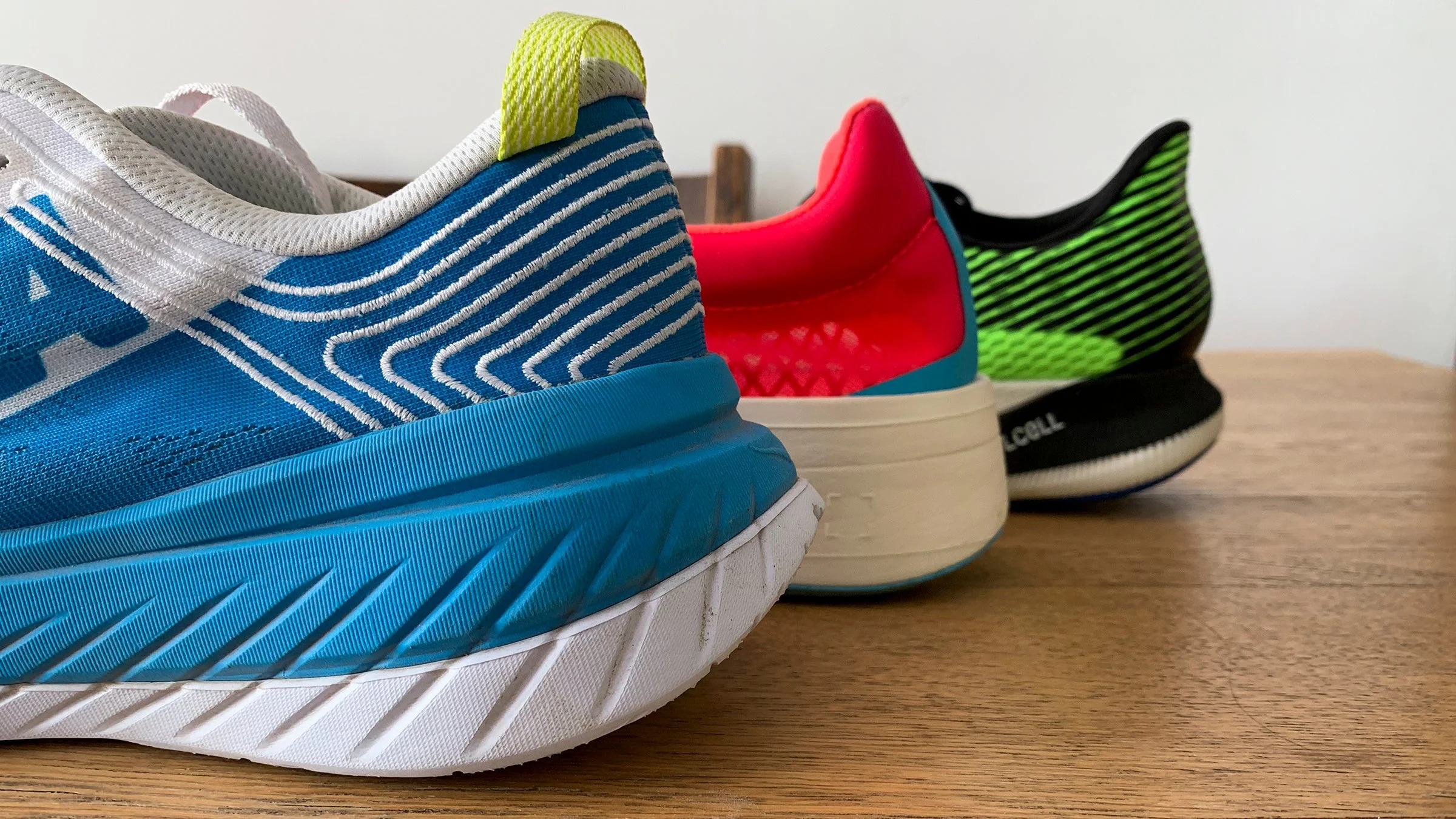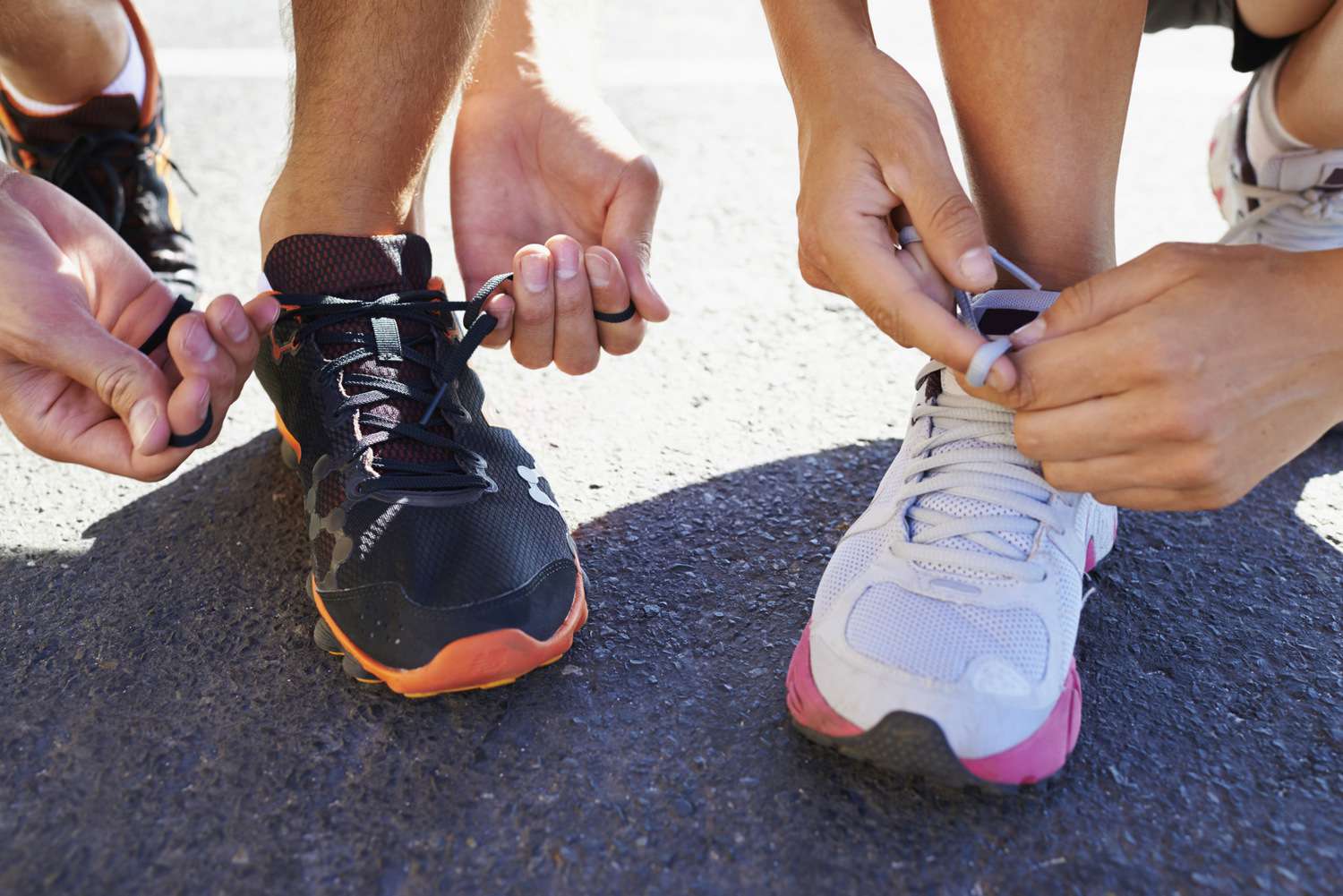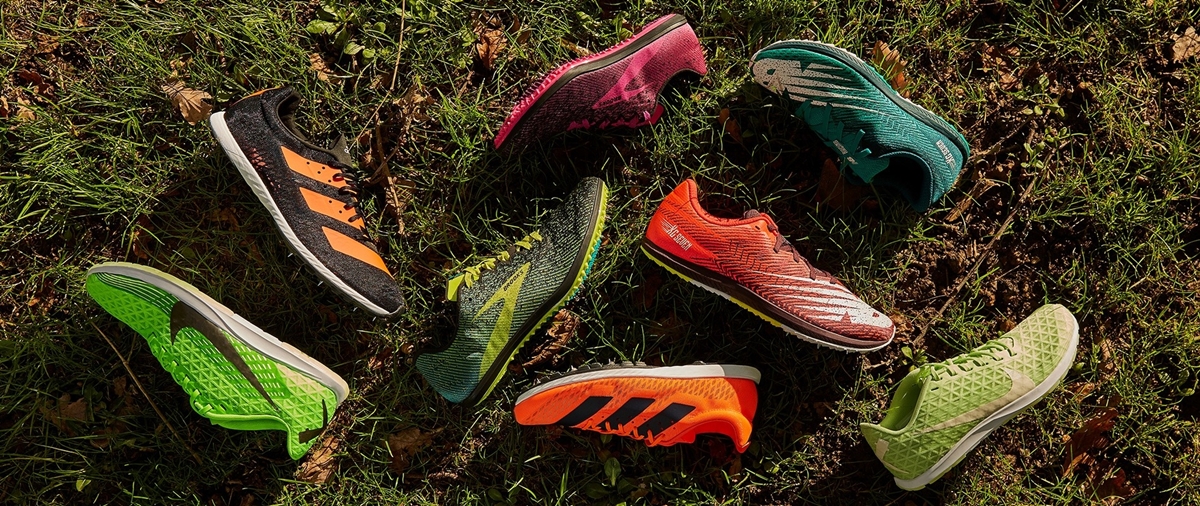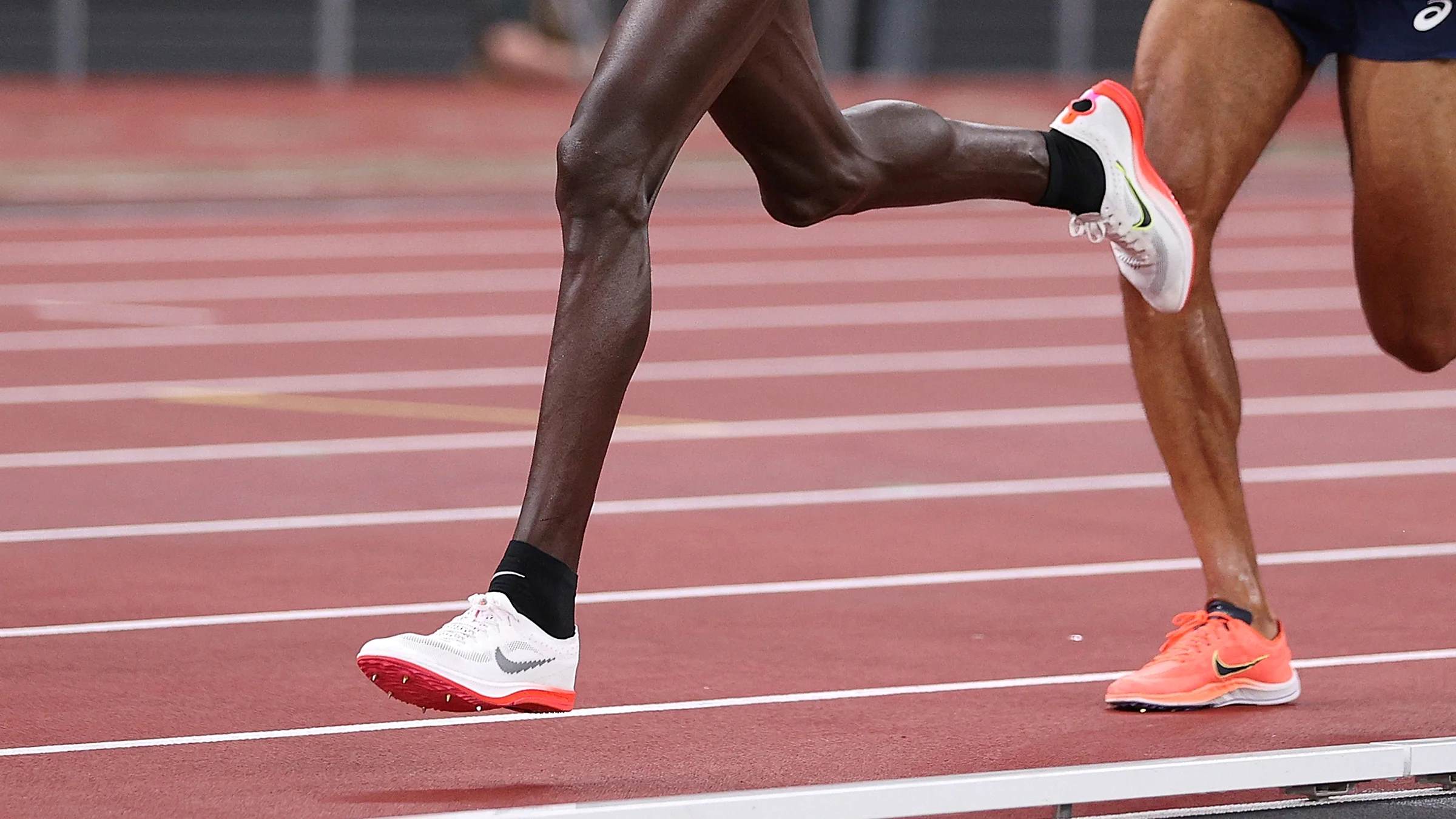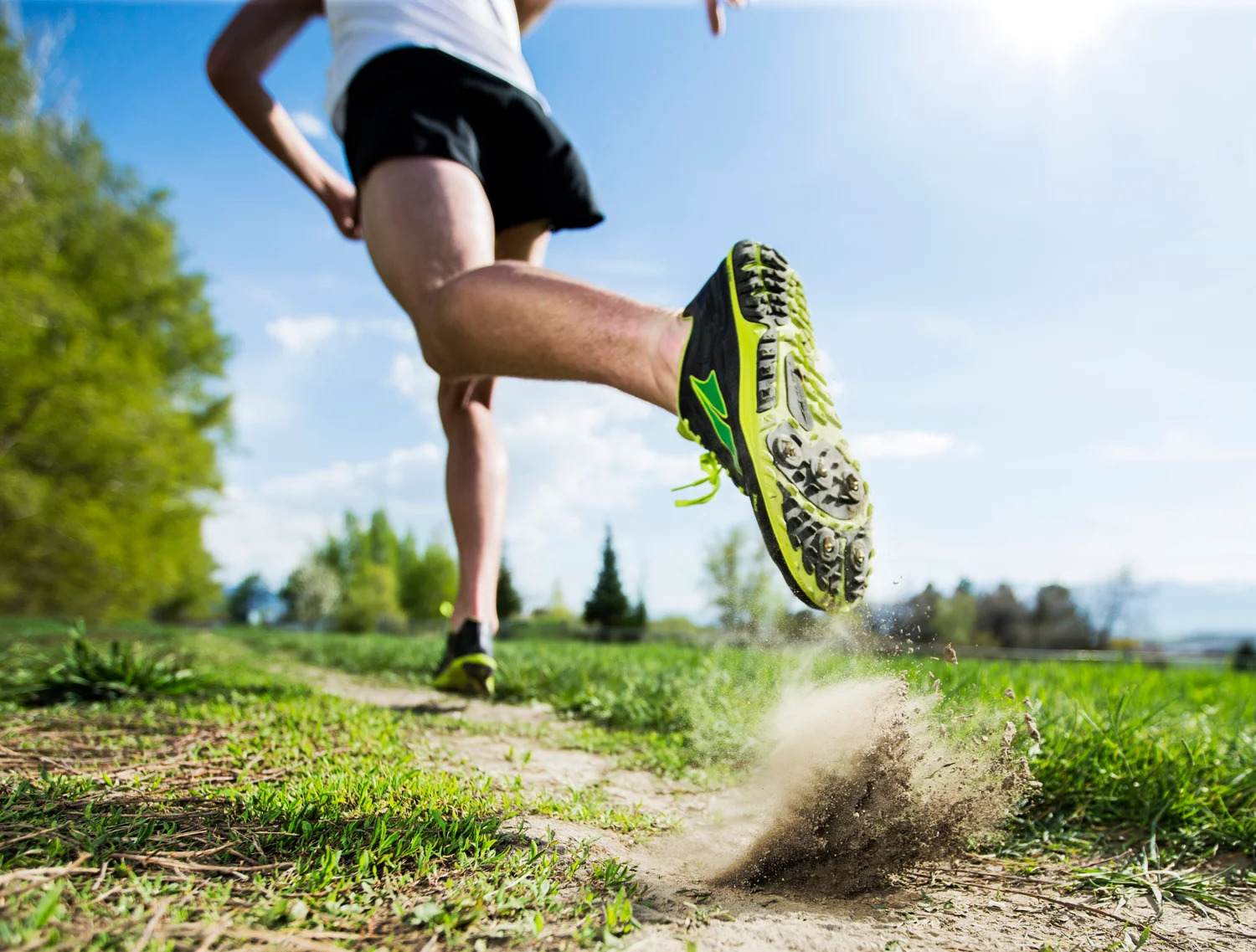

Featured
Why There Are Spikes On Running Shoes
Modified: August 19, 2023
Discover why running shoes have spikes and how they can enhance your performance. Find out the benefits of featured running shoes with spikes.
Introduction
Running is a popular form of exercise, whether it’s for recreational purposes or competitive athletics. When it comes to running, having the right gear is essential for optimal performance and injury prevention. One crucial piece of equipment that runners rely on is their shoes. Over the years, running shoes have evolved to meet the specific needs of runners, and one distinct feature that can be found on some models is spikes.
Spikes, also known as cleats or studs, are protrusions commonly found on the outsole of running shoes. These spikes are designed to provide additional traction and grip on various surfaces, such as grass, tracks, or trails. They play a crucial role in enhancing a runner’s performance by increasing stability and minimizing the risk of slipping or sliding.
This article will delve deeper into the purpose and benefits of spikes on running shoes. We will explore how spikes can improve traction, enhance performance on different surfaces, and reduce the risk of slipping. Additionally, we will discuss the different types of spikes available, the materials used, and how to choose the right spikes based on individual preferences and needs.
Whether you’re a seasoned runner or new to the sport, understanding the significance of spikes on running shoes can help you make more informed decisions when it comes to selecting the ideal footwear for your running endeavors. So, let’s dive in and explore why there are spikes on running shoes, and how they can elevate your running experience.
Evolution of Running Shoes
The evolution of running shoes can be traced back thousands of years, from early civilizations to modern-day advancements in technology. Throughout history, humans have been running for various purposes, such as hunting, transportation, and competition. As running became a popular sport and form of exercise, the need for specialized footwear arose.
In ancient times, running shoes were rudimentary, consisting of basic sandals or animal hides tied to the feet. These primitive shoes provided minimal protection and support, with no consideration for traction or performance enhancement.
As civilizations evolved, so did the designs of running shoes. The ancient Greeks and Romans, for instance, developed footwear with more advanced features, including leather soles and straps for a more secure fit. However, it wasn’t until the late 19th and early 20th centuries that significant advancements in running shoe technology began to emerge.
One of the first significant developments in running shoe design came in the form of the spiked sole. This innovation provided a breakthrough in traction for runners, particularly those competing on grass or dirt surfaces. Initially, the spikes were made of metal and were manually screwed into the outsole of the shoe. This allowed for easy customization and replacement, depending on the terrain and conditions.
Over time, running shoe manufacturers began to experiment with different spike placements and materials. The goal was to optimize traction while simultaneously providing comfort and support. With advancements in manufacturing techniques, spikes became integrated into the shoe’s design and were no longer removable.
In the 1960s, synthetic materials such as rubber and plastic were introduced for the production of spikes. These materials offered enhanced durability, lightweight properties, and increased flexibility. The use of synthetic spikes revolutionized running shoe construction, allowing for greater customization and performance benefits.
Today, running shoes have evolved to provide a balance between comfort, cushioning, stability, and traction. The incorporation of spikes on certain models is a testament to the ongoing quest for improved running performance and safety. With ongoing research and technological advancements, the future of running shoes holds even more exciting possibilities.
Purpose of Spikes on Running Shoes
Spikes on running shoes serve a specific purpose: to enhance a runner’s traction and grip on various surfaces. They are strategically placed on the outsole of the shoe to provide targeted points of contact with the ground. The primary goal of spikes is to improve performance, stability, and minimize the risk of slipping or sliding while running.
One of the key advantages of spikes is their ability to increase traction. The protruding nature of spikes on the outsole creates more surface area in contact with the ground, allowing for a better grip. This increased traction is particularly beneficial on muddy, wet, or slippery surfaces where regular running shoes might struggle to maintain stability.
Spikes also provide improved performance on different surfaces. For example, in track and field events such as sprinting or middle-distance running, spikes offer optimal traction on synthetic track surfaces. In cross-country running, where runners encounter various terrains like grass, mud, and uneven surfaces, spikes provide the necessary traction to navigate these challenging conditions more effectively.
Moreover, spikes on running shoes can significantly reduce the risk of slipping or sliding during running activities. By digging into the ground or surface, spikes provide added stability, especially during sharp turns or sudden changes in direction. This reduces the chance of losing balance and potentially sustaining injuries.
Another purpose of spikes is to help runners maintain a consistent stride and push-off. The added grip can enhance forward propulsion by preventing the foot from slipping backward during the push-off phase of the running motion. This allows runners to exert more power and drive their strides more efficiently.
It is important to note that not all running shoes come with spikes. The presence of spikes is typically found in specialized running shoe models designed for specific activities or terrains, such as track and field events or cross-country running. For general road running or training on paved surfaces, spikes may not be necessary and could even hinder performance or cause discomfort.
In the following sections, we will explore the different types of spikes found on running shoes and the materials used in their construction. Understanding these elements will help you choose the right spikes that best suit your running needs and preferences.
Increased Traction and Grip
One of the primary purposes of spikes on running shoes is to provide increased traction and grip while running. The unique design and placement of spikes allow runners to maintain better control and stability on various surfaces, ultimately enhancing their performance.
When running on surfaces such as grass, dirt trails, or muddy terrains, regular running shoes may struggle to maintain a solid grip. This is where spikes come into play. The protruding spikes on the outsole of running shoes penetrate the surface, providing additional points of contact with the ground. This increased contact area translates to improved traction and grip, giving runners the confidence to push harder and move faster.
The design of the spikes plays a crucial role in enhancing traction. Different spike patterns and arrangements are tailored to specific terrains and running styles. For example, cross-country spikes often feature longer, more aggressive spikes that can dig into softer surfaces like mud or grass. On the other hand, track spikes typically have shorter and more evenly distributed spikes, designed to provide traction on synthetic track surfaces.
Spikes not only prevent slipping and sliding but also improve stability, particularly during quick turns or sharp changes in direction. The additional grip allows runners to stay in control and maintain their balance, reducing the risk of accidents or injuries due to sudden slips. This is especially important for athletes participating in sports like sprinting or middle-distance running, where precise footwork and quick acceleration are crucial.
Furthermore, increased traction and grip provided by spikes can have a significant impact on running efficiency. With better grip, runners can optimize their push-off and ensure a more powerful stride. The added stability enables the foot to generate more force during the toe-off phase, leading to improved propulsion and faster running speeds. This is particularly beneficial in competitive races or events where every split-second advantage counts.
However, it’s important to note that spikes are not suitable for all running surfaces. On hard, paved surfaces like roads or concrete, the spikes may not be as effective and can cause discomfort or unnecessary strain on the feet. It’s crucial for runners to discern when to wear spiked shoes and when to opt for regular running shoes to ensure optimal performance and reduce the risk of injury.
In the next section, we will explore the different types of spikes commonly found on running shoes and the materials used in their construction. Understanding these aspects will help you select the right spikes based on your specific running needs and preferences.
Improved Performance on Different Surfaces
Spikes on running shoes not only increase traction and grip but also contribute to improved performance on various surfaces. Different terrains and running environments demand different levels of traction, and having the right spikes can make a significant difference in a runner’s performance.
When it comes to track and field events, such as sprinting or middle-distance running, the surfaces are typically made of synthetic materials like rubber or polyurethane. These surfaces are smooth and provide minimal traction for regular running shoes. However, track spikes, with their unique spike patterns and materials, are designed to maximize traction on these specific surfaces.
Track spikes aim to exploit the grip potential on synthetic tracks to achieve faster times. The spike plates usually house multiple pyramid-shaped spikes that dig into the track surface, optimizing traction for explosive starts and powerful acceleration. The spike configuration can vary based on the runner’s event and preference, ranging from shorter and denser spikes for sprinters to slightly longer and sparser spikes for middle-distance runners.
On the other hand, for cross-country runners, the terrain can include various surfaces like grass, dirt, mud, gravel, or even rocky trails. In such instances, cross-country spikes provide the necessary traction and grip needed to tackle the challenging terrain effectively. These spikes often feature longer, more aggressive spikes that can penetrate softer surfaces and provide stability on uneven terrains. They help prevent the shoe from sinking into the ground and facilitate surefootedness throughout the race.
Furthermore, spikes can also enhance performance during hill running or trail running. The added traction provided by the spikes helps runners maintain grip and control when navigating steep inclines or uneven surfaces. This allows for more efficient climbing and descent, reducing the risk of slips or falls.
It’s important to note that while spikes excel in their intended environments, they may not perform as effectively on other surfaces. For instance, using track spikes on trails or road surfaces can cause discomfort and potentially damage the spikes. It is crucial for runners to determine the appropriate type of spikes based on the terrain they will be running on to optimize their performance.
In the next section, we will discuss the various types and materials of spikes used in running shoes. Understanding these factors will help you make an informed decision when selecting the right spikes to suit your running needs.
Decreased Risk of Slipping
One of the significant advantages of having spikes on running shoes is the decreased risk of slipping. The spikes on the outsole of the shoes provide added traction and grip, allowing runners to maintain stability and minimize the chances of slipping or sliding.
When running on slippery surfaces, such as wet grass, muddy paths, or icy terrain, the risk of losing footing increases. Regular running shoes with smooth outsoles may struggle to gain sufficient traction, making it easier for runners to slip and potentially sustain injuries.
Spikes effectively address this issue by digging into the surface, creating anchor points that prevent the shoe from sliding uncontrollably. The sharp and protruding spikes grip the ground, improving traction and providing stability, even in challenging conditions. This allows runners to maintain their rhythm and stride, reducing the risk of accidents.
In addition to wet or slippery surfaces, spikes are also beneficial when running on loose or uneven terrains. Whether it’s loose gravel, sandy trails, or rugged terrain, having the added grip of spikes can help runners navigate these surfaces with greater ease and confidence.
Moreover, spikes play a crucial role in maintaining stability during sharp turns or sudden changes in direction. These maneuvers can put significant stress on the foot and increase the likelihood of slipping, especially if the shoe lacks proper traction. With spikes, runners can confidently tackle turns, knowing that the added grip will help them maintain balance and avoid unnecessary slips or falls.
However, it’s important to exercise caution and adapt running techniques when wearing spiked shoes. While spikes provide enhanced traction and decrease the risk of slipping, they may affect the natural flexibility and range of motion of the foot. Runners should be mindful of their stride and foot placement to prevent injuries or strain caused by excessive reliance on the spikes.
It’s also worth mentioning that while spikes can significantly reduce the risk of slipping, they may not be foolproof. Runners should still exercise caution and adjust their speed and stride based on the current surface conditions. Proper technique, balance, and good running form are essential for maximizing the benefits of spikes and minimizing the risk of accidents.
In the next section, we will explore the different types of spikes commonly found on running shoes, as well as the materials used in their construction.
Types of Spikes on Running Shoes
When it comes to running shoes, there are various types of spikes that cater to different terrains and running styles. The type of spikes you choose can significantly impact your traction, grip, and overall performance. Here are some common types of spikes found on running shoes:
- Pyramid Spikes: Pyramid spikes are the most common type of spikes used in track and field events. As the name suggests, these spikes have a pyramid-shaped design, with sharp edges that dig into the track surface. They provide optimal traction on synthetic tracks and are suitable for sprinting and middle-distance running.
- Needle Spikes: Needle spikes, also known as pin spikes, are longer and thinner compared to pyramid spikes. These spikes penetrate the track surface deeper and are often used in longer-distance races or events like steeplechase. The increased length offers better grip and stability throughout the race.
- Compression Spikes: Compression spikes, also called compression-fit spikes, are designed for versatility. They feature a screw-like design that allows for easy customization and adjustment. These spikes can be interchanged based on the runner’s preference or the terrain. They are suitable for both track and cross-country running.
- Christmas Tree Spikes: Christmas tree spikes, also known as tartan spikes, are commonly used in indoor track events. These spikes have a unique elongated design resembling a Christmas tree, with multiple points for grip. They offer good traction on synthetic indoor tracks, providing stability when taking tight turns or accelerating on the bends.
- Replaceable Spikes: Some running shoes come with replaceable spikes, allowing runners to customize the spike configuration based on their preferences and the running conditions. These spikes are often made of durable materials like metal or durable plastics, and they can be easily screwed in or out of the shoe’s outsole.
It’s important to consider the type of surface you will be running on when selecting the appropriate spikes. For example, pyramid spikes and needle spikes are ideal for tracks, while longer and more aggressive spikes are suitable for cross-country running, providing the necessary grip on grass, mud, or uneven terrains.
Furthermore, it’s crucial to ensure the spikes are compatible with your running shoe model. Different shoes have varying spike plate configurations, and using incompatible spikes can result in poor fit or damage to the shoe’s outsole. It’s always recommended to consult the manufacturer’s guidelines or seek expert advice when purchasing and installing spikes for your running shoes.
In the following section, we will explore the materials used in the construction of spikes and their impact on durability and performance.
Spike Materials and Durability
The durability of spikes on running shoes is crucial, as they are subjected to constant friction and impact during running. The materials used in the construction of spikes play a significant role in their longevity and performance. Let’s explore some common spike materials and their impact on durability:
- Metal Spikes: Metal spikes, typically made of stainless steel or hardened alloys, have long been a popular choice for their durability and exceptional grip. Metal spikes offer excellent traction on various surfaces, making them ideal for track and field events. However, metal spikes are susceptible to wear over time, especially on hard surfaces like tracks or paved roads. Regular inspection and replacement of worn-out metal spikes are essential to maintain optimal performance.
- Plastic Spikes: Plastic spikes, often made of durable polymers like nylon or ABS plastic, have gained popularity as a lightweight and cost-effective alternative to metal spikes. These spikes provide decent traction and are less abrasive on track surfaces. Plastic spikes are durable and can withstand heavy use, making them a suitable choice for both track and cross-country running. They can be a great option for runners who prioritize comfort and versatility.
- Ceramic Spikes: Ceramic spikes are a relatively newer development in spike technology. They offer a good balance between performance and durability. These spikes are often made of high-quality ceramic materials that are lightweight, durable, and provide excellent traction. Ceramic spikes are designed to last longer than traditional metal spikes and are an excellent choice for runners looking for extended use and improved performance.
- Rubber Tips: Some cross-country spikes may feature rubber tips instead of traditional metal or plastic spikes. These rubber tips offer a unique combination of durability and versatility. Rubber spikes provide reliable traction on soft or muddy surfaces and are less likely to cause damage to tracks or other hard surfaces. They are also more forgiving on the foot, offering enhanced comfort during longer runs.
Choosing the right spike material depends on personal preference, running style, and the specific surface conditions you will encounter. While metal spikes offer excellent traction and grip, they may wear down quickly on harder surfaces. Plastic and ceramic spikes provide durability and versatility, making them suitable for various running scenarios.
Regardless of the spike material, it’s important to maintain and inspect the spikes regularly. Regular cleaning after each run and storing the spikes in a dry environment will help prevent corrosion and extend their lifespan. If the spikes are showing signs of wear, such as blunting or becoming loose, it’s essential to replace them promptly to maintain optimal performance and prevent potential injuries.
In the next section, we will discuss how to choose the right spikes for your specific running needs and provide tips on maintaining and replacing spikes for long-lasting performance.
How to Choose the Right Spikes for Your Needs
Choosing the right spikes for your running shoes is crucial to optimize your performance and ensure a comfortable and safe running experience. Here are some factors to consider when selecting the right spikes for your needs:
- Running Surface: Consider the primary surface you will be running on. If you primarily run on synthetic tracks, opt for pyramid or needle spikes designed for track and field events. For cross-country or trail running, go for longer and more aggressive spikes that offer better traction on grass, mud, or uneven terrains.
- Running Distance: The distance you typically run can impact the type of spikes you choose. Shorter sprints or middle-distance running might benefit from shorter or denser spikes. For longer cross-country races or trail runs, longer spikes may provide better grip and stability throughout the distance.
- Comfort and Fit: It’s essential to choose spikes that provide a comfortable fit. Consider factors such as arch support, cushioning, and overall shoe comfort. Ensure that the spikes do not cause any discomfort or pressure points during your runs, as this can affect your performance and increase the risk of injury.
- Spikes Material: Assess the durability and traction offered by different spike materials. Metal spikes offer exceptional grip but may wear down quickly on hard surfaces. Plastic and ceramic spikes provide durability and versatility, making them suitable for various running terrains.
- Type of Spike Plate: Pay attention to the spike plate configuration of your running shoes. Different shoes have varying spike plate designs and hole patterns. Ensure that the spikes you choose are compatible with the spike plate of your shoes for a proper fit and optimal performance.
It’s also helpful to seek recommendations from experienced runners or consult with professionals at specialty running stores who can provide personalized advice based on your specific running style and goals. They can assist you in finding the right spike type, length, and fit for your needs, ensuring that you make an informed decision.
Remember, it’s crucial to maintain and inspect your spikes regularly. Clean the spikes after each run and store them in a dry environment. If the spikes show signs of wear such as blunting or becoming loose, replace them promptly to maintain optimal performance and prevent accidents.
By taking into account these considerations and making an informed decision, you can select the right spikes for your needs, allowing you to maximize your running performance and enjoy a more comfortable and secure running experience.
Maintaining and Replacing Spikes
Maintaining and replacing the spikes on your running shoes is essential to ensure optimal performance and longevity. Proper care and maintenance can help extend the lifespan of the spikes and prevent potential problems during your runs. Here are some tips for maintaining and replacing your spikes:
- Clean your spikes: After each run, remove any dirt, mud, or debris from the spikes. Use a brush or toothbrush to gently scrub the spikes and remove any build-up. This prevents the accumulation of dirt, which can affect traction and performance. It’s also important to clean the spike holes in the shoe’s outsole to ensure proper seating of the new spikes.
- Inspect for damage: Regularly inspect the spikes for signs of wear, such as blunting or bending. Pay attention to any loose or damaged spikes that may affect traction. If you notice any significant damage or wear, it’s time to consider replacing the spikes. Prompt replacement is crucial to maintaining optimal grip and reducing the risk of slips or falls.
- Replace worn-out spikes: When replacing spikes, ensure you use the appropriate ones that are compatible with your shoe’s spike plate. Refer to the manufacturer’s guidelines or consult with professionals at a running store to identify the right replacement spikes for your specific shoe model. Follow the instructions provided for proper installation to ensure a secure fit.
- Periodic replacement: While the lifespan of spikes can vary depending on factors like running frequency, terrain, and spike material, it’s generally recommended to replace them after every 150-200 miles of running. Regularly assess the condition of your spikes to determine if they need replacement. Remember, worn-out spikes can impact traction, stability, and overall running performance.
- Store spikes properly: When not in use, store your spikes in a cool, dry place. Avoid exposure to moisture or extreme temperatures, as these factors can cause damage or corrosion. Keeping your spikes in a clean and dry environment will help maintain their performance and ensure they are ready for your next run.
By following these maintenance and replacement practices, you can proactively care for your spikes and keep them in optimal condition. Regular cleaning, inspection, and timely replacement will contribute to improved traction, grip, and overall performance during your runs.
Remember, spikes are an essential component of your running shoes, and ensuring their proper upkeep is crucial for a safe and enjoyable running experience.
Conclusion
Spikes on running shoes serve a critical purpose in enhancing traction, grip, and overall performance. The evolution of running shoes has seen the incorporation of spikes to meet the specific needs of different running surfaces and activities. Whether you’re a track and field athlete, a cross-country runner, or someone who enjoys running on various terrains, understanding the significance of spikes can elevate your running experience.
Spikes provide increased traction and grip, allowing runners to maintain better control and stability. They reduce the risk of slipping or sliding, particularly on slippery surfaces or during sharp turns. The improved traction also translates to enhanced performance, as runners can achieve better push-off and stride efficiency. Different types of spikes, such as pyramid spikes, needle spikes, or compression spikes, cater to specific running styles and terrains.
It is important to choose the right spikes based on your running needs, surface conditions, and personal preferences. Consider factors such as the running surface, running distance, comfort, and spike material when making your selection. Consulting with experienced runners or professionals at specialty running stores can provide valuable insights and guidance in choosing the most suitable spikes for your specific requirements.
Maintaining and replacing spikes is essential to ensure their longevity and optimal performance. Regularly clean your spikes, inspect them for damage, and replace worn-out spikes when necessary. Proper care and storage will help extend the lifespan of your spikes and ensure they are in top condition for your runs.
As you continue to pursue your running goals, remember to strike a balance between performance and safety. While spikes can enhance traction and grip, it’s important to adapt your running technique and adjust your speed to the current surface conditions. Always prioritize running form, balance, and good judgment to minimize the risk of accidents or injuries.
So, whether you’re sprinting on the track, conquering cross-country trails, or tackling challenging terrains, the spikes on your running shoes will provide the added advantage you need to excel. Embrace the benefits of spikes, choose the right ones for your needs, and enjoy the enhanced performance and stability they offer as you pursue your running endeavors.
